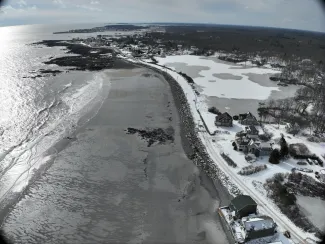
Using drone photography, the team that included six students showed how the historic storms wiped out 28% of the dunes along four Maine beaches
A University of New England research team is the first to publish a report on Maine’s historic January 2024 storms, which caused extensive coastal damage and destroyed more than a quarter of the coastal dunes along the four beaches that were studied.
The UNE team’s report, published on Sept. 22 in the journal Geomorphica, showed that the beaches in the coastal Maine communities of Saco, Biddeford, and Kennebunkport lost 28% of coastal dunes in the back-to-back storms that elicited federal disaster relief.
The research team led by UNE’s Will Kochtitzky, Ph.D., an assistant professor in the School of Marine and Environmental Programs, mapped the storm destruction using drone photography, or unoccupied aerial vehicle (UAV) photogrammetry that produces two-and-three dimensional models, providing data that will help Maine coastal communities prepare for severe weather events in the future.
Kochitizky and his team of seven UNE students, including four current students, gathered the data both for Kochtitzky’s geographic information systems (GIS) courses and as part of research funded by the Maine Space Grant Consortium and the Maine Outdoor Heritage Fund.
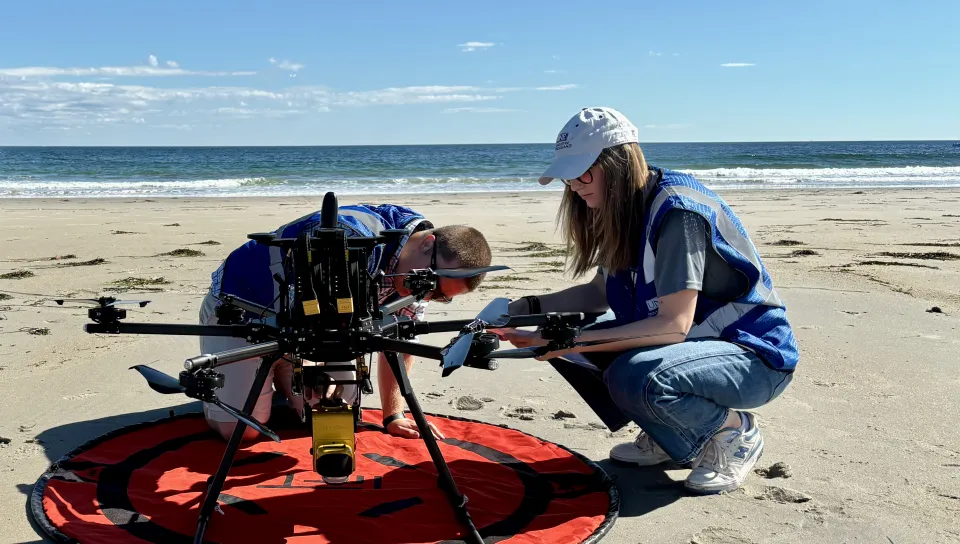
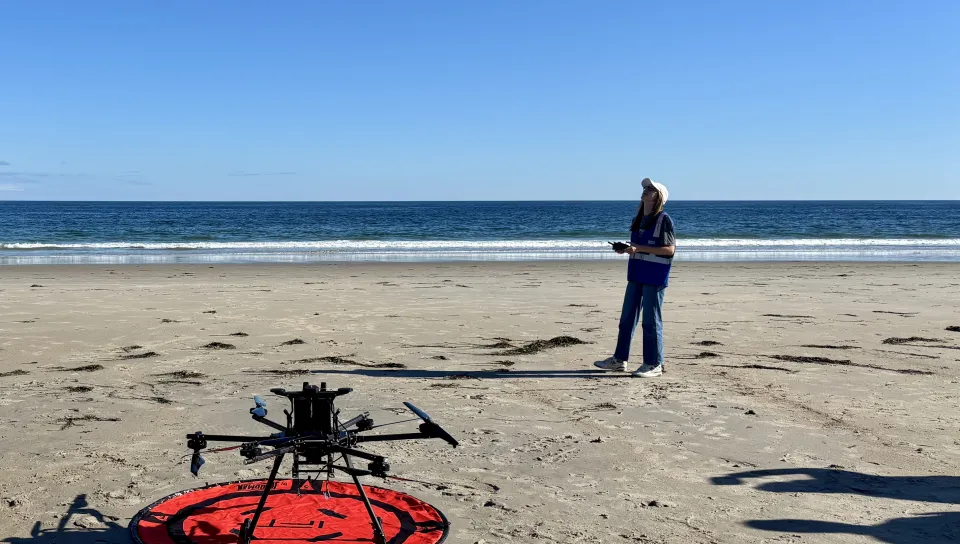
Students Johanna Birchem (Environmental Science, ’26), Bryan Corvelo (Environmental Studies, ’27), Tyler Janik (Aquaculture, Aquarium Science, and Aquaponics, ’27), and Ruth Ellis (Environmental Science, ’25) worked on the report along with alumni Katelyn DeWater, B.S. ’25 (Marine Sciences), Paige-Marie Merrill, B.S. ’24 (Environmental Science), and Matthew Pittsley, B.S. ’24 (Environmental Science).
Maine experienced its highest water level on record on Jan. 13, 2024, during the second of the two back-to-back winter storms that destroyed dunes along the four shorelines in southern Maine mapped by the UNE team.
The record high water level that resulted from a coinciding storm surge, waves, and an astronomically high tide caused $70.3 million in damage to public infrastructure and millions more in private property damage, according to the state.
The UNE team noted in Geomorphica that dunes serve as the first line of defense during severe storms and provide protection to homes and roads as well as important wildlife habitat, including nesting sites for shorebirds like piping plovers.
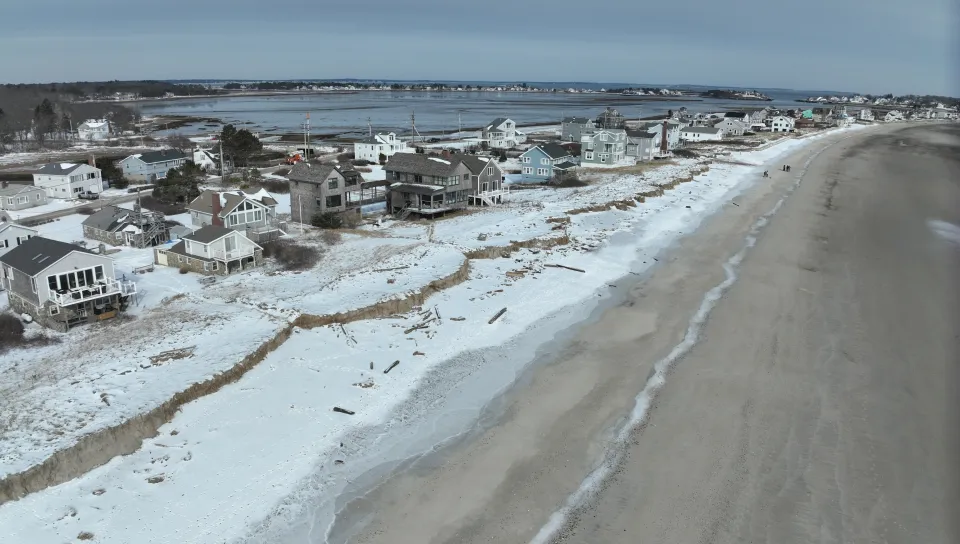
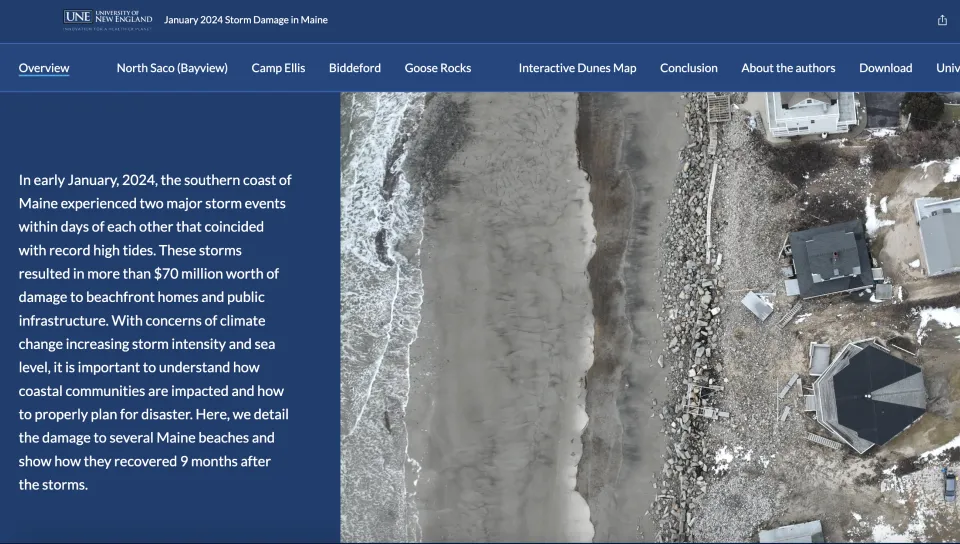
Kochtitzky and his student research team found that, across the four shorelines in southern Maine, dune area loss ranged from 18 to 45%, while only 10 to 50% of dune volume was recovered nine months after the storm, at the end of the growing season.
The researchers further found that restoration efforts, including beach scraping and dune grass planting, were roughly 90% more effective for annual dune recovery than taking no action — findings that will aid coastal communities given a future that is expected to bring higher water levels and more powerful storms.
The UNE team concluded in the report that “restoration efforts may be essential for the recovery, longevity, and stability of dunes and beach faces,” especially as severe storms are expected to increase in frequency. The report highlighted that roughly 600 million to 700 million people globally already live within 30 feet of sea level, a number expected to exceed 1 billion by 2050.
To date, there is no other published research on Maine’s historic 2024 storms, Kochtitzky said. To help the public better understand the findings published in Geomorphica, the UNE student team produced a website on their research to offer a more accessible format than academic literature.
“The data sets we collect are really unique,” Kochtitzky said. “We plan to continue our coastal erosion monitoring efforts to support coastal Maine communities in the years ahead.”
Read more in the Portland Press Herald, the Sun Journal, the Morning Sentinel/Kennebec Journal, Yahoo!News, Maine Morning Star, Saco Bay News, New Hampshire Bulletin, Finnoexpert, Spectrum News, NEWS CENTER Maine, and Newsbreak.